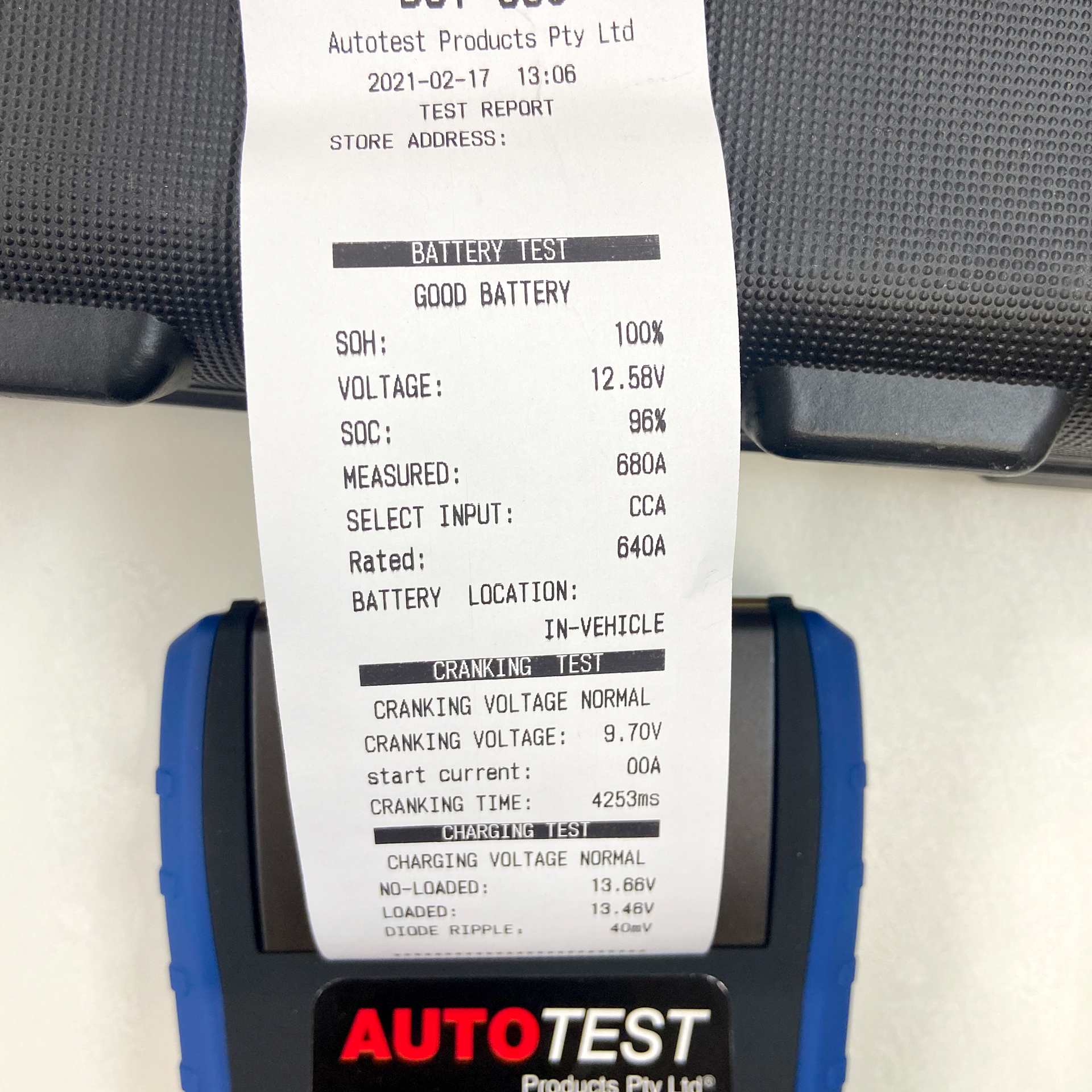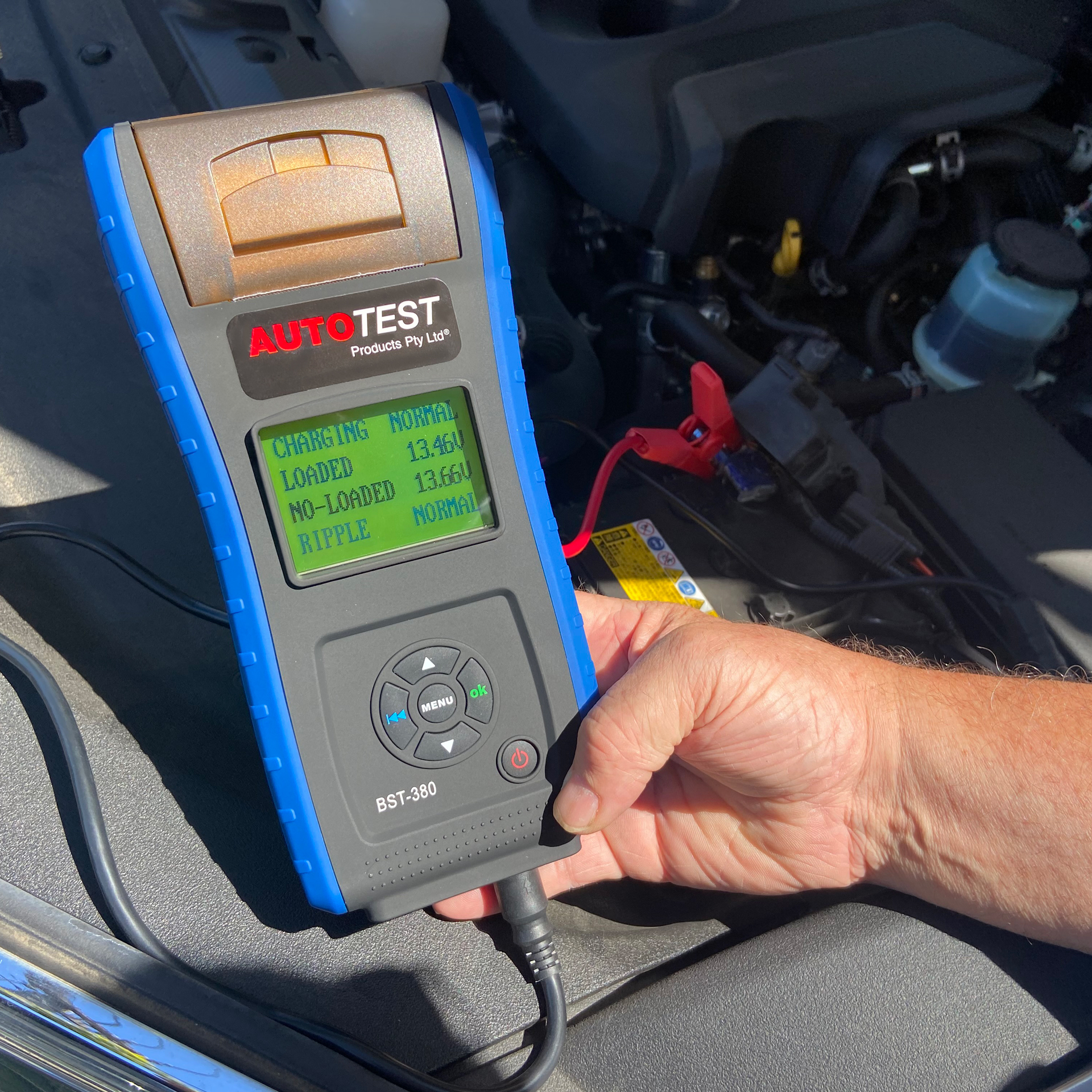The electric charge that your battery carries will not last a century. It can only carry so much electric charge for a specified amount of time and sooner or later it will discharge. In most cases, it is quite difficult to tell how much electric charge you have left.
The 21st century cars are modern machines and fully loaded with high technology gadgets such as GPS navigation, LCD screens, DVD players and can be connected to Bluetooth devices. How all this latest car technology can handle by car battery which is installed in car electrical system. You may have all these top-of-the-line automobile extras but if your battery is dead, so are they.
Testing of batteries in a short comprehensive test is the dream of testing devices.
State-of-health is not measured but estimated based on available symptoms. If the symptoms are not well defined or obvious then a reliable measurement is not possible. When testing a battery and trying to determine the state of health you must consider
Capacity, ability to store energy.
Internal resistance, ability to deliver current.
Self-discharge, cell integrity and health


Batteries are presented for assessment in a variety of conditions, and a good charge can easily mask a symptom allowing a weak battery to perform well. Likewise, a strong battery with low charge shares similarities with a battery that exhibits capacity loss. Battery characteristics are also swayed by a recent charge, discharge, or long storage. These characteristics need to be considered while testing batteries.
The top indicator of a battery health is capacity, a measurement that represents energy storage. A new battery should deliver 100 percent of the rated capacity. This means a 10Ah pack should deliver Ten amps for 1 hour. If the battery fails to perform after 20 minutes for example, then the capacity is only 33 percent. Capacity defines end of battery life.
Lead acid starts at about 85 percent and increases in capacity through use before the long and gradual decrease begins Lithium-ion starts at peak and begins its decline immediately, but at a very slow pace. Nickel-based batteries need several charge/discharge cycles to reach full capacity when new or after a long storage.
Manufacturers typically provide specifications based on a new battery. Unfortunately, this performance only represents a new cell and not represent a battery in real-life situations, because degradation begins from the day the battery is made. The decrease in performance only becomes visible once the battery has been used many times and daily routines are being taken for granted.
“It is difficult to know when to replace a battery, some are replaced too early, but most are kept too long.”
This is difficult for many battery users. When asked, many reply with confusion. Many are not familiar with the term capacity as a measurement of battery life, and fewer know that capacity is used as a threshold for replacing batteries. In many scenarios, battery problems only become apparent with increased breakdowns, which may be caused by a lack of battery maintenance.
Battery replacement depends on the application. Using battery Analysers typically set the replacement threshold at 80 percent capacity. In some applications you can keep the battery longer than others and cost benefit decisions need to be made in different situations. Hand tools for example may go as low as 60 percent and still provide a full day’s use, whereas a battery in a car will still start the car at 40 percent capacity.
With batteries you need to plan for a worst-case scenario, while manufacturers include some reserve when specifying battery life and capacity, the amount is seldom clearly defined. In critical applications then tighter tolerances should be used and the battery must be replaced sooner than when a sudden failure can be tolerated.
Medical and military applications are considered critical and batteries are often replaced too soon. Rather than testing them, battery manufacturers prefer to use a cycle count or a date stamp to mandate retirement. To cover all eventualities, the service duration on a date stamp is often limited to 2 or 3 years.
In some medical applications it has been observed that many batteries have more than 90 percent capacity left when the mandatory 2-year date-stamp expires, replacing perfectly good batteries prematurely. Despite this apparent waste, this has been mandated in this field because a survey says that “up to 50 percent of service calls in hospitals surveyed relate to battery issues.”
Some batteries and portable devices include a fuel gauge that shows the remaining energy. A full charge always shows 100 percent, whether the battery is new or faded. This creates a false sense of security by anticipating that a faded battery showing fully charge will deliver the same runtime as a new one. Batteries with fuel gauges only indicate State of charge and not the capacity, and this is based usually on Battery Voltage.
“Battery failure is not only limited to portable devices.”
More than 40 percent of all roadside car failures are battery-related, and that each third breakdown involves either a discharged or defective battery. Additionally, only a few starter batteries reach the average age of five years, and this applies to all cars. These statistics was derived from a study that covered more than four million breakdowns in Europe. The study only included newer cars; service-prone vehicles more than 6 years old were excluded.
The Battery Council International reports similar results. A 2010 study revealed that grid-related failures had increased by 9 percent from 5 years earlier. Experts suspect that higher electrical demands in modern vehicles lead to higher failure rates.
Battery failure in Japan is the largest single complaint among new car owners. The average car is driven 13km per day and mostly in congested cities. The most common reason for battery failure is undercharge, developing sulfation.
A manufacturer of luxury cars in Europe reported that one in two starter batteries returned under warranty had no problem. A European manufacturer of high-quality starter batteries stated that factory defects account for only 5 to 7 percent of all warranty claims. Battery failure during the warranty period is seldom a factory defect, driving habits are the main culprits. A careful assessment with advanced battery test instruments capable of looking at various failure symptoms can greatly reduce warranty claims.
“The mobile phone industry experiences similar battery warranty issues.”
Nine out of ten batteries returned are said to have no problems. Rather than trouble-shooting a customer complaint because of lower than expected runtime, the technician simply replaces the battery, in turn leads to repeat complaints.
The key problem lies in the difficulty of testing batteries, and this applies to repair shops, retail outlets, and service garages. There is a significant shortfall in a reliable method of estimating the state-of-charge, which is based mostly on voltage and charge counting. Assessing capacity, is the leading health indicator of a battery! Measuring the open circuit voltage and checking the internal resistance do not provide conclusive evidence of battery state-of-health.
A dead battery is easy to check and most testers are 100 percent accurate. The challenge comes in evaluating a battery in the 80–100 percent performance range while in use. Most service and repair workshops struggle to introduce good battery test procedures. This is mostly due to the unavailability of suitable technology that can assess a battery on the go.
There is a lot of hype and effort put into the super battery, but this improved battery is incomplete without being able to check performance while in service. Improving performance and reliability does not rest in a better battery alone, but in tracking the performance as it ages.
Have so much improvement over the years, but the technology is still basically the same. Not until we are stranded in some place because we can’t start the car, do we even think of our car battery. A modern car battery voltage tester can warn of impending battery failure and may even diagnose alternator problems; thus evaluate and determine the course of action that needs to be taken.
Uses the adjustable load test as gauge to decide whether your battery is still usable or need to be discarded and replaced. These testers measure the voltage drop when a voltage load that is half the battery’s CCA rating is used. And how does it work? The load is applied for about 15 seconds and the voltage drop is measured. Make sure that when you do this test the ambient temperature is not below 20⁰C. If the drop reading does not fall below 9.6 volts, then your battery is ideally conditioned, and is therefore, considered good. To illustrate this, let’s take an example: You have a battery of Cold Cranking Amp (CCA) rating of 600; if you apply 300 amps load for 15 seconds and the measured voltage does not fall below 9.6 volts then the battery is good. It is also possible to use a car battery tester in opposing temperature conditions, but only if you compensate for the difference in calculations.
This accurate method of testing is exactly how the AutoTest® BST-380 Battery System Tester evaluates a battery. It not only gives a complete view of battery health, but is a conveniently portable, easy to use battery analysis tool designed for automotive service, fleet maintenance and breakdown assist diagnostic use. Taking the guess work out of battery diagnosis alerting you to replace batteries before they fail.
The Battery System Tester is a professional quality unit that tests all 12V auto batteries, including new auxiliary batteries for hybrids.
It uses advanced conductance testing technology to easily, quickly and accurately measure the actual cold cranking amps capability of the vehicle starting battery, the health of the battery itself, and common faults in the vehicle starting system and charging system. It can help maintenance personnel to identify problems quickly and accurately, thus leading to efficient vehicle repair.
AutoTest® Battery System Tester Functions:
Test Functions:
Published in Australian Diesel Mechanic Magazine February 2021 – Issue 54
Keep your workshop and equipment updated!
Subscribe to our newsletter for exclusive sales, discounts, and the latest news.
Sign up today!